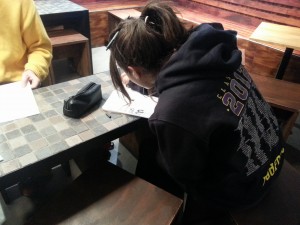Project Design Brief 2 Self Portrait from Chrys on Vimeo.
For this project brief I tired to continue with the themes of travel and conversation I had in my first brief. I also kept the idea that I wanted to represent an older version of me rather than who I currently was as to show, how often I reflect and that I’m sentimental. For example the “padfoot jumper” within the video is my old graduation jumper and the conversation at the end is one I vividly remember having in year ten. I’ve also tried to create reflection through rewind at then end of the clip and using book endings of a tram ride as I often find myself reflecting, especially when a highschooler jumps on.
I tried to structure my video as a normal school day, starting with getting to class, being in class then leaving class with friends before returning to me now, sitting on a tram thinking about how things used to be then. For the getting to class part of the portrait i’ve tried to edit together a lot of clips to keep the audience entertained so they don’t have to watch a 30 second clip of a train moving.
The music I made for my video captures who I am and used to be like, because I am often in my head, imaging something more exciting than a tram ride or a school class.
While the voice clip at the start, is my mum talking about how she still dreams about highschool, which often makes me think if it’s just something you are going to constantly reflect on for the rest of your life.
Although I am rather happy with the video i’ve produced i feel that I’ve still chosen quiet a literal representation of myself; meaning that rather than people seeing me as reflective/sentimental they’re see just me doing work and hanging with friends. I tried to improve on this from my first project brief by changing my text and voice clips, to be more focused around high school without me blatantly saying, “I’ve been thinking a lot about high school lately”
With that said I am pleased with how travel and friendship/conversation has been expressed in my video, although next time i’d like to work more on editing to music and sound.









